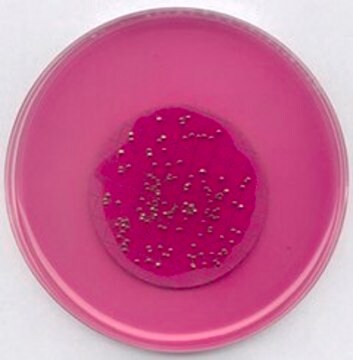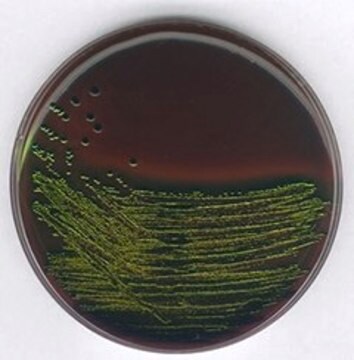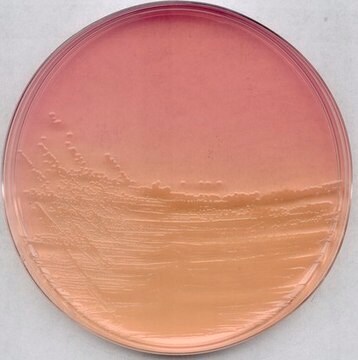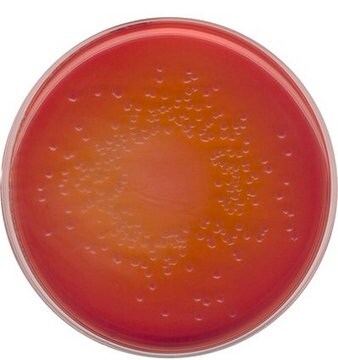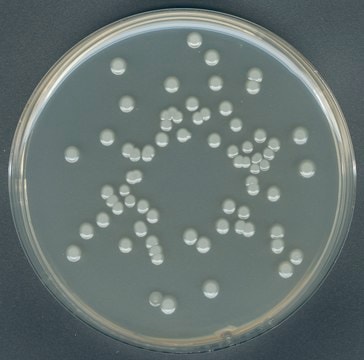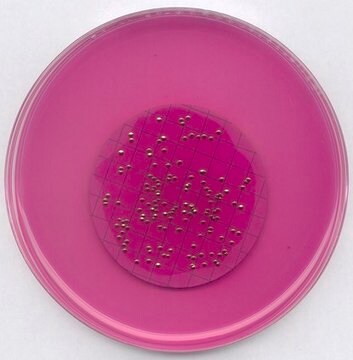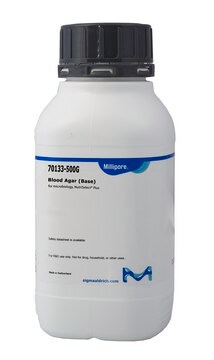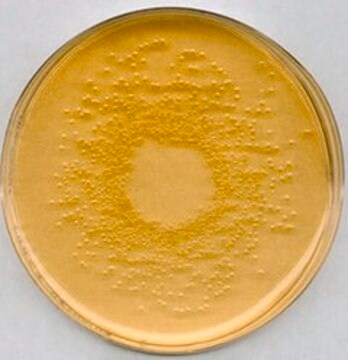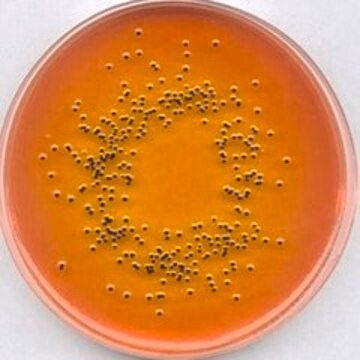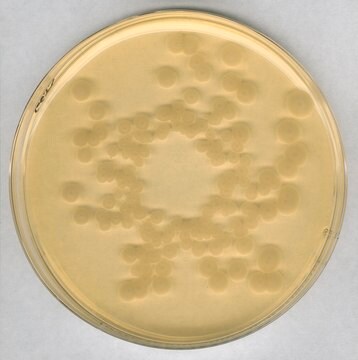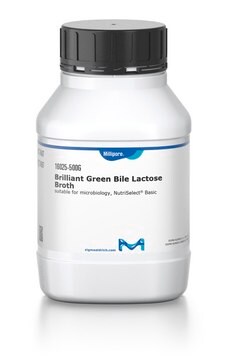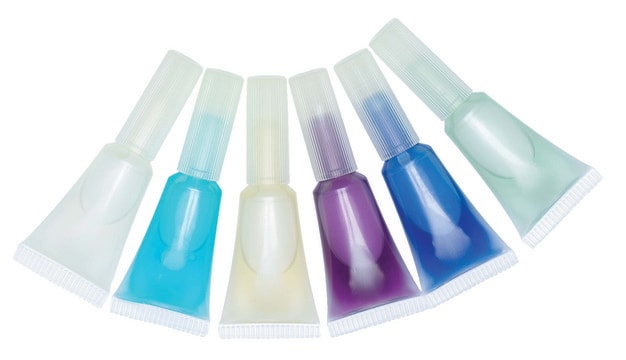E5399
Endo agar
suitable for microbiology, NutriSelect® Plus
About This Item
Produits recommandés
Stérilité
non-sterile
Niveau de qualité
Forme
powder
Durée de conservation
limited shelf life, expiry date on the label
Fabricant/nom de marque
NutriSelect® Plus
Technique(s)
microbiological culture: suitable
pH
7.5±0.2 (25 °C)
Application(s)
bioburden testing
cleaning products
cosmetics
environmental
food and beverages
personal care
veterinary
water monitoring
microbiology
Adéquation
selective and differential for Enterobacter spp.
selective and differential for Escherichia coli
selective and differential for Klebsiella spp.
selective and differential for Proteus spp.
selective and differential for Salmonella spp.
selective and differential for Shigella spp.
selective and differential for coliforms
Composants
Peptic Digest of Animal Tissue 10.00
Lactose 10.00
Dipotassium Phosphate 3.50
Sodium Sulphite 2.50
Basic Fuchsin 0.50
Agar 15.00
Notes préparatoires
Note de bas de page
The designations basic, plus, or prime are added to indicate the quality control level, from basic quality control to standard QC plus to prime for full regulatory compliance.
Informations légales
Mention d'avertissement
Warning
Mentions de danger
Conseils de prudence
Classification des risques
Carc. 2
Code de la classe de stockage
11 - Combustible Solids
Classe de danger pour l'eau (WGK)
WGK 2
Point d'éclair (°F)
Not applicable
Point d'éclair (°C)
Not applicable
Équipement de protection individuelle
dust mask type N95 (US), Eyeshields, Faceshields, Gloves
Faites votre choix parmi les versions les plus récentes :
Déjà en possession de ce produit ?
Retrouvez la documentation relative aux produits que vous avez récemment achetés dans la Bibliothèque de documents.
Les clients ont également consulté
Articles
Salmonella contamination is the second leading cause of food-borne illness worldwide. Controlling outbreaks of Salmonella is an important task for food regulators, restaurants and the food industry in general. The Salmonella family includes over 2,300 serotypes of bacteria, but two types, Salmonella enteritidis and Salmonella typhimurium, are responsible for about half of all human infections. Most outbreaks of Salmonella are traced back to dairy, poultry and meat products, but Salmonella can grow on nearly any food. Chicken, eggs and their derivative products are particularly high risk.
An article concerning selective growth media for differentiation and detection of Escherichia coli and other coliforms.
Notre équipe de scientifiques dispose d'une expérience dans tous les secteurs de la recherche, notamment en sciences de la vie, science des matériaux, synthèse chimique, chromatographie, analyse et dans de nombreux autres domaines..
Contacter notre Service technique